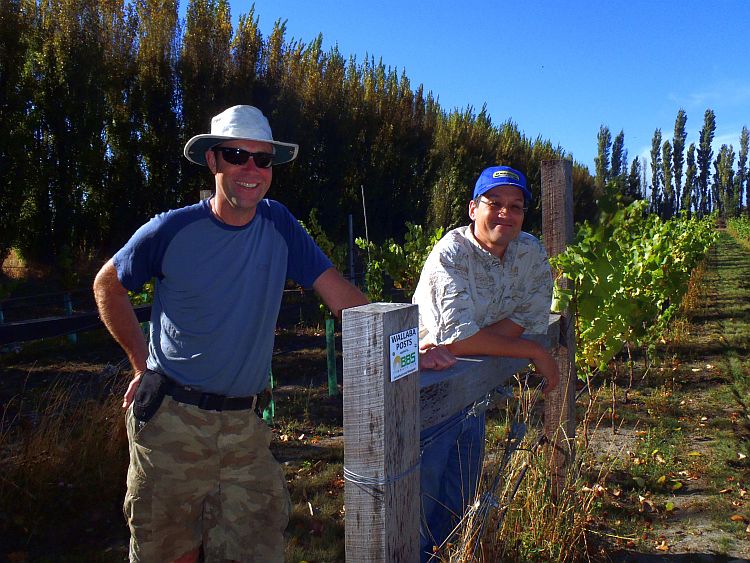Written by Molly Shaw
Tucked away in a back field at the Biological Husbandry Unit of Lincoln University there is a remarkable collection of grapes, and coincidentally, an interesting assortment of trellis posts as well. The grape collection is a genetic library with potential to propagate or even mine for new traits.
Once upon a time it was easy to bring plants into New Zealand. New plant varieties, including hundreds of grapes, were imported from European wine regions and established here at will. Not so nowadays, when anyone entering the country endures the rigorous shake-down of the MPI and knows first-hand how seriously the phytosanitary rules are enforced. Plants no longer arrive with casual travellers!
These strict rules protect the valuable agriculture and forestry industries from exotic pests, but they also mean importing grape varieties from breeding programs around the world is expensive and time-consuming. This makes the impressive collection of grape varieties all the more special.

Charles ‘Merf’ Merfield (Head of the FFC) and Glen Creasy (Ex-Senior Lecturer in Viticulture at Lincoln University) in the vineyard leading on Wallaba wood posts. Photo credit: Molly Shaw
Established in 2010, these vines represent 600 selections ranging from vinifera and hybrids to table-grapes, labrusca types, and rootstocks. Some selections are of the same variety, but herald from different locations, and therefore may have slightly different characteristics. The grapes in the collection have not been virus-tested so could potentially have viruses in them. Canterbury makes a good location for these collections because it does not (as yet) have grape mealy bug, the vector of some viruses. This means that any viruses present should not spread to neighbouring plants.
It’s a plant library, just as books are catalogued and put on the shelf for unknown future users, the potential use of the genetic material in this collection can only be estimated. Perhaps the table grapes there will be the foundation of a NZ table grape industry. Maybe an older variety will have resistance to a destructive new disease. No one knows for sure. However, if each variety had to be imported and go through the extensive quarantine and testing process, 600 varieties at $5,000 each makes for quite a valuable collection.
These vines were going into the ground at the BHU just as tanalised / copper chromium arsenate (CCA) treated wood was being banned from organic production. Conventional growers were also starting to shy away from tanalised posts, so the new vineyard represented an opportunity to try out alternatives. So in addition to the motley appearance bestowed by hundreds of grape varieties grown side by side, each row has a different style of trellis posts.
The following posts were used in the vineyard.
| Post name | Manufacturer / supplier / website link |
| UltraPost | Industrial Tube Manufacturing Co Ltd |
| EcoPost | Industrial Tube Manufacturing Co Ltd |
| Wood Shield | Wood Shield Pty |
| Eco Trellis | NZ Tube Mills |
| IR posts | Integrated Recycling Ltd (AU) / Pukekohe Timber & Packaging (NZ) |
| Recycled Plastic Post | Empak Distribution |
| Wallaba Posts | BBS Timber |
The post collection is a demonstration rather than a trial, so no comparisons are being made among the different posts. Also inclusion of any particular post is not an endorsement of that post by the BHU or FFC nor is the non-inclusion of any post a rejection of that post by the BHU or FFC.
However, anyone is welcome to view and assess the posts for themselves during normal working hours. The vineyard is sited at The BHU Farm, The Hort Research Area, Lincoln University. Google map. You can also email Charles Merfield for more information.
